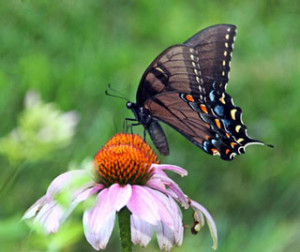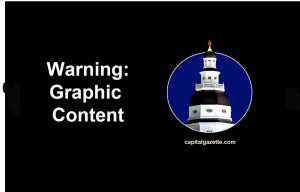Chesapeake Bay Action Plan
After decades of effort, the voluntary, collaborative approach to restoring the health and vitality of the Chesapeake Bay— the largest estuary in the United States—has not worked and, in fact, is failing.
A diverse group of 57 senior scientists and policymakers have joined forces to save the Bay. This is our plan.
It’s time for DNR to restrict the commercial crab harvest
The time has come for DNR to restrict commercial harvest by adopting strict daily bushel limits for males and greatly decreasing the bushel limits for females, reducing the number of crab pots used, shortening the crabbing season, closing crabbing two days each week, and adopting a quota system for each commercial crabber as with rockfish.
Best practices for lawn care when living in the Chesapeake Bay watershed
rigorous scientific review found that the world’s insects are hurtling down the path to extinction, threatening a “catastrophic collapse of nature’s ecosystems.” More than 40% of insect species are declining radically including 53% of butterfly and 46% of bee species; some are critical pollinators responsible for 35% of the world’s food crops. More than 3,500 species of native bees sustain these crop yields. Three-fourths of the world’s flowering plants also depend on pollinators. Pesticides are clearly implicated in these radical declines of insects as well as other pollinators including moths, birds, and bats.
Officials, Chesapeake Bay Foundation must take action to prevent flesh-eating diseases
We need to greatly ratchet down the nutrients especially from agriculture and also from existing and new development. The environmental community must change its tactics and stand up to agribusiness and use the courts and legislature to crack down on this major source of bay pollution. We also must significantly reduce global warming emissions that lead to rising water temperatures and increased nutrients, both which fuel the proliferation and deadliness of flesh eating organisms.
Ending population growth is a mark of progress
Economic growth does not require population increases. We can grow our economy by using education and technology to increase productivity. We live in a world of finite resources with food, water, and health care insecurity. With slower or zero population growth, we can make greater progress toward resolving economic and environmental issues and boost our productivity as a nation and the quality of life for all of us. Calling for population growth to increase the number of workers flies in the face of the need to find employment for the 6.3 million currently unemployed.
With the climate crisis bearing down, Maryland legislators cave in to fossil fuels
Suspending the gas tax may sound good, but it’s a bad idea. Are our elected officials blind to the fact that almost nine out of every 10 barrels of oil used in Maryland are consumed by the transportation sector and that 36% of greenhouse gas emissions come from motor vehicles? Or that Americans use more oil than any nation, exceeding the next highest nation by 54% while consuming 20% of all oil with only 4% of the world’s population?
Help Return the Patuxent River Commission to Protecting the River
from Fred Tutman (the Patuxent Riverkeeper) and Barbara Sollner-Webb (President of the West Laurel Civic Association) You may have seen recent articles in the Washington Post, Baltimore Sun and Laurel Leader about the Patuxent River Commission — this is an update and call to action. The Patuxent River Commission (PRC) is Maryland’s only governmental river…
Report finds Maryland is lax in regulating poultry industry pollution
By Gerald Winegrad A new report, “Blind Eye to Big Chicken,” documents a near complete abdication by Maryland agencies of their responsibilities to enforce critical pollution control regulations to rein in massive poultry industry pollution. The report by the watchdog group Environmental Integrity Project (EIP) details how chicken growers continue to violate state laws with…
How do we fight waterborne diseases? By reducing emissions and alerting the public to the dangers…
Health departments and the Department of Natural Resources need to issue regular public notices through the media about the dangers posed by these toxic organisms. Their messages should indicate precautions that can be taken to avoid waterborne diseases, especially for those most susceptible, including the immunocompromised or those with diabetes or chronic liver disease. Here’s what needs to be emphasized:
We are senior Chesapeake Bay scientists and policymakers from Maryland, Virginia and Pennsylvania who have concluded that after decades of effort, the voluntary, collaborative approach to restoring the health and vitality of the largest estuary in the United States has not worked and, in fact, is failing. Our group unanimously recommends that all states draining into the Chesapeake Bay adopt our 25 action items in their Watershed Implementation Plans (WIP) and implement them to improve the Bay’s water quality and to meet the requirements of the Clean Water Act.
Sign up for news & updates from Patuxent Riverkeeper



